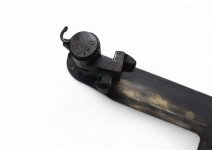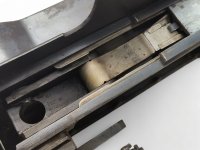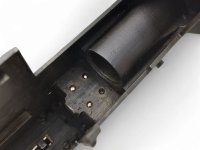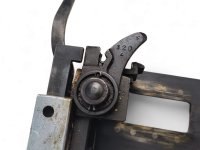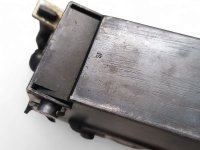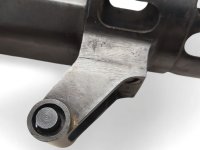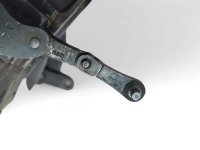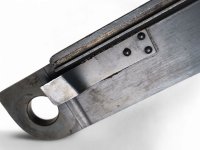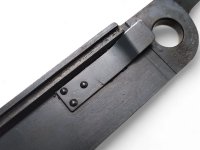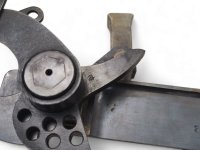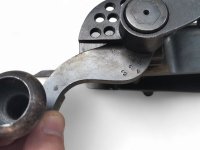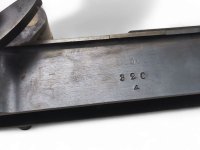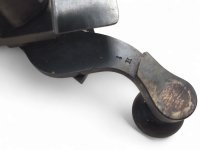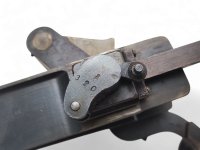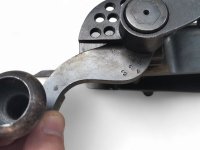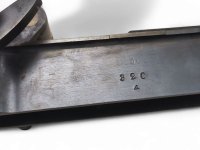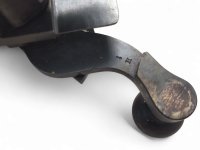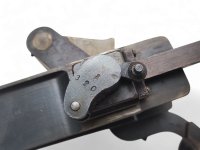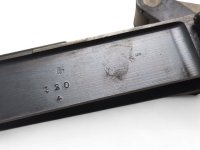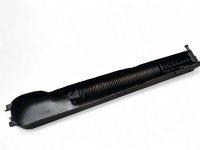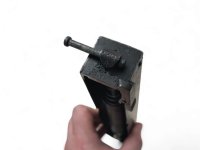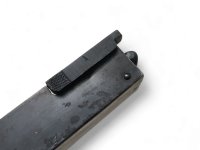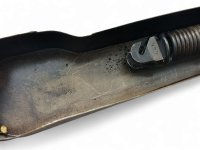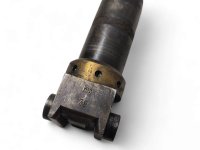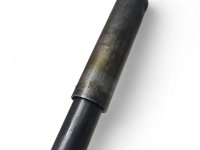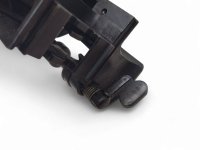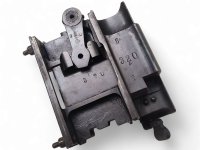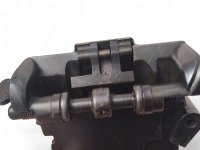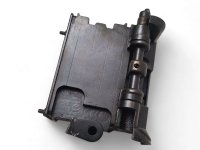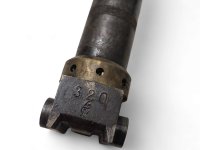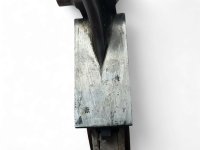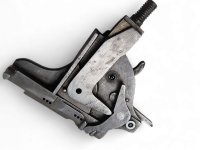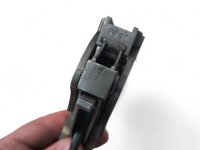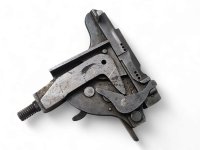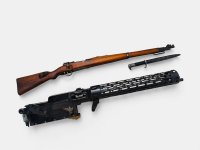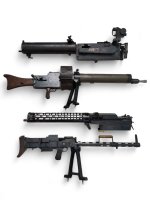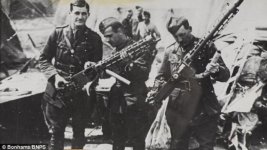Hi guys,
This was offered to me by a friend recently and always thought these were a neat variant of German Maxims. The LMG 08/15 was one of a couple MGs isssued to the air service. Spandau Arsenal appears to be the sole manufacturer of the this variant, leading to this model sometimes being called the "Spandau" by Entente troops who saw the name on the top plate of captured guns. They served alongside the DWM-produced Parabellum series (and some oddballs) and were an improvement on the earlier LMG08 (basically an air-cooled MG08 for planes). LMG 08/15s were typically found on single person aircraft and were mounted in pairs on the front of the aircraft (whereas the Parabellum found more use as a defensive weapon on multi-person craft). Here is how they would have been mounted on an Albatros:
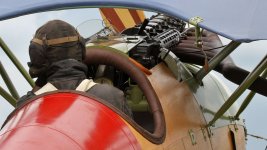
The guns would be linked to a synchronization device designed to fire through the arc of the propeller and not hit it. This was a massive advantage for the Germans when first introduced, but later became less of a factor as the Entente caught up in technology. These are naturally less common than the standard configuration 08/15s for the obvious reason that they were affixed to aircraft and would require special accommodation to mount and shoot.
This particular example is a nearly matching parts kit that is missing the right side plate (the regulated part). The lock is the only major mismatch and someone over the years scrubbed the SN off the top of the lock, leaving only the acceptance. There are a couple of parts that would have been attached to the side plate missing, particularly the device to assist the pilot with both cocking and pulling the belt into battery (versus having to manually pull the belt on the ground model). The feed block arm is broken, which was a fairly popular way to demill these pre NFA. The front cross-hair sight and booster are also missing (as seems to be the case on some of these) , but I am working on replacements.
Off the bat, you will notice differences with the ground model. First and foremost; it is air cooled (very effective at altitude and speed of a plane) and significantly lighter. The cocking handle is lighted and would have attached to the aforementioned cocking and clearing device. The rear plate is identical to that of the ground model, though there is no stock (since it was affixed to the front of the plane. You'll note the purpose built safety lever though; it operates simply by lifting up or down. The top portion of the synchronization gear is present on this example, which is a nice feature (it is the brass/steel device on the underside). You can also see the two screws on the rear of the MG attached to remnants of a cartridge counter device.
The kit came with a matching and live Krupp barrel. Based on serialization trends, this is a late one, being in the "b" block of 1918.
What follows is a detailed photo study. As usual with MGs, lots of subcontractor marks on parts.
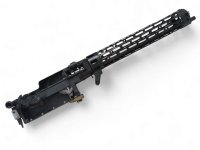

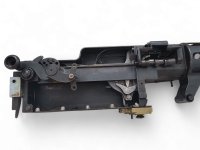
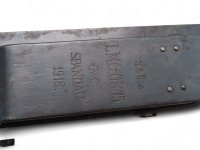
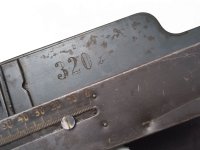

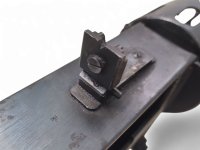
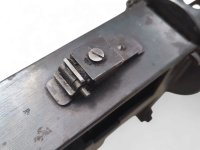
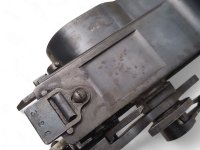
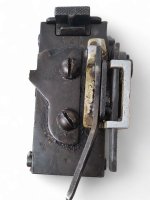
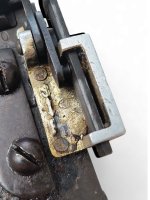
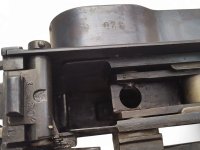
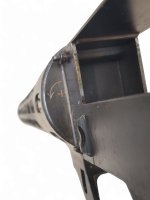
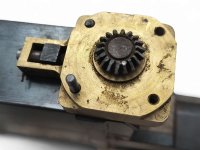
This was offered to me by a friend recently and always thought these were a neat variant of German Maxims. The LMG 08/15 was one of a couple MGs isssued to the air service. Spandau Arsenal appears to be the sole manufacturer of the this variant, leading to this model sometimes being called the "Spandau" by Entente troops who saw the name on the top plate of captured guns. They served alongside the DWM-produced Parabellum series (and some oddballs) and were an improvement on the earlier LMG08 (basically an air-cooled MG08 for planes). LMG 08/15s were typically found on single person aircraft and were mounted in pairs on the front of the aircraft (whereas the Parabellum found more use as a defensive weapon on multi-person craft). Here is how they would have been mounted on an Albatros:

The guns would be linked to a synchronization device designed to fire through the arc of the propeller and not hit it. This was a massive advantage for the Germans when first introduced, but later became less of a factor as the Entente caught up in technology. These are naturally less common than the standard configuration 08/15s for the obvious reason that they were affixed to aircraft and would require special accommodation to mount and shoot.
This particular example is a nearly matching parts kit that is missing the right side plate (the regulated part). The lock is the only major mismatch and someone over the years scrubbed the SN off the top of the lock, leaving only the acceptance. There are a couple of parts that would have been attached to the side plate missing, particularly the device to assist the pilot with both cocking and pulling the belt into battery (versus having to manually pull the belt on the ground model). The feed block arm is broken, which was a fairly popular way to demill these pre NFA. The front cross-hair sight and booster are also missing (as seems to be the case on some of these) , but I am working on replacements.
Off the bat, you will notice differences with the ground model. First and foremost; it is air cooled (very effective at altitude and speed of a plane) and significantly lighter. The cocking handle is lighted and would have attached to the aforementioned cocking and clearing device. The rear plate is identical to that of the ground model, though there is no stock (since it was affixed to the front of the plane. You'll note the purpose built safety lever though; it operates simply by lifting up or down. The top portion of the synchronization gear is present on this example, which is a nice feature (it is the brass/steel device on the underside). You can also see the two screws on the rear of the MG attached to remnants of a cartridge counter device.
The kit came with a matching and live Krupp barrel. Based on serialization trends, this is a late one, being in the "b" block of 1918.
What follows is a detailed photo study. As usual with MGs, lots of subcontractor marks on parts.















